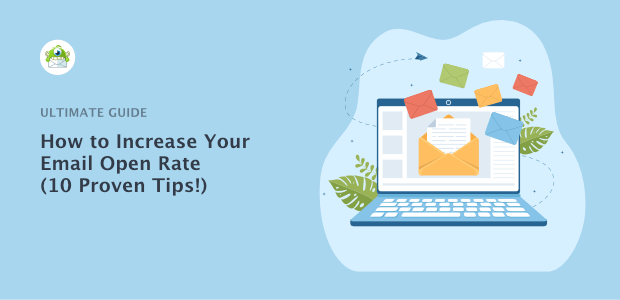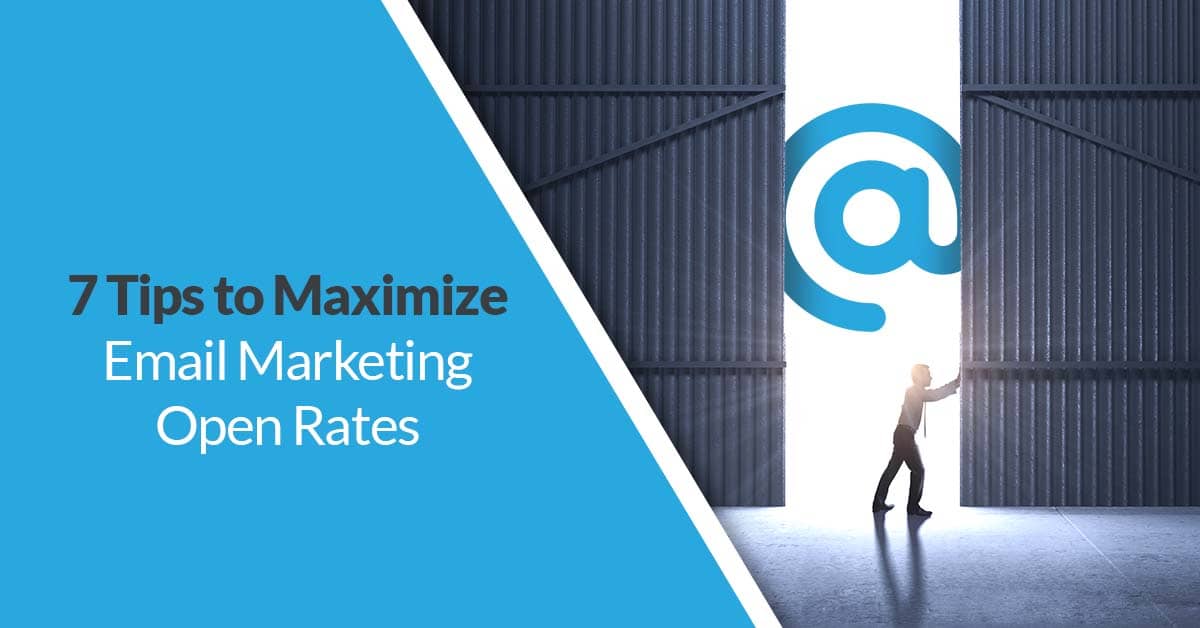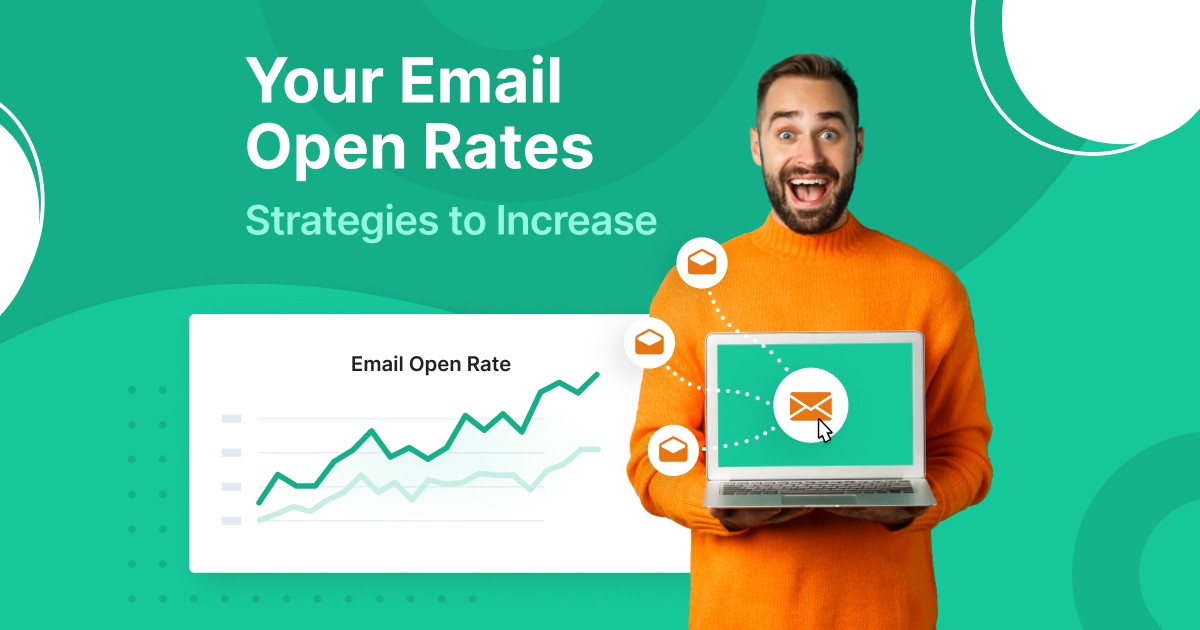To maximize your email open rate, craft compelling subject lines and personalize your emails. Use segmented lists to target specific audiences.
Email marketing remains a powerful tool for businesses. Success hinges on getting recipients to open your emails. Crafting compelling subject lines is crucial. Personalization also plays a vital role. By addressing the recipient by name and tailoring content to their interests, you make the email more engaging.
Segmentation is another key strategy. Dividing your email list based on demographics or past behavior ensures the right message reaches the right people. Consistently testing and refining your approach can further enhance open rates. With these strategies, your email campaigns become more effective and impactful.

Credit: optinmonster.com
Crafting The Perfect Subject Line
To maximize your email open rate, the subject line is crucial. A compelling subject line grabs attention and makes recipients click. Let’s explore some effective techniques.
Keep It Short And Sweet
A short subject line is more effective. It should be easy to read and understand. Aim for 6-10 words. This fits well on mobile screens.
| Word Count | Open Rate |
|---|---|
| 6-10 words | 21% |
| 11-15 words | 14% |
| 16+ words | 9% |
Use Power Words
Power words create curiosity and urgency. They make your email stand out. Examples include:
- Free
- Exclusive
- Limited Time
- Hurry
These words encourage recipients to open your email. They feel compelled to act quickly.
Personalization Techniques
Personalization makes recipients feel valued. Use their name or location. For example:
- Hi [Name], Special Offer Just for You!
- [Name], Don’t Miss Out on This Event in [City]
Personalized subject lines have higher open rates. They create a sense of relevance and importance.
Timing Your Emails
Getting your email timing right can hugely impact your open rates. By sending emails at the right moment, you can increase engagement and conversions. Let’s dive into the best strategies for timing your emails perfectly.
Best Days To Send
Choosing the right day to send emails is crucial. Here are the top days to consider:
| Day | Reason |
|---|---|
| Tuesday | High open rates and engagement. |
| Thursday | Similar engagement to Tuesday. |
| Wednesday | Mid-week can be effective. |
Optimal Times Of Day
Sending your emails at the right time can make a big difference. Here are the optimal times:
- Early Morning (6 AM – 10 AM): People check emails before work.
- Late Morning (10 AM – 12 PM): High activity before lunch.
- Early Afternoon (1 PM – 3 PM): A good window post-lunch.
Frequency Of Emails
Balancing the frequency of your emails is key to maintaining engagement without overwhelming your audience:
- Weekly: Ideal for newsletters or updates.
- Bi-Weekly: Good for deeper engagement.
- Monthly: Suitable for detailed reports or long reads.
Ensure your content is valuable and well-timed to maintain reader interest.
Segmenting Your Audience
Segmenting your audience is a powerful way to maximize your email open rate. By dividing your subscribers into specific groups, you can tailor your messages to meet their unique needs and preferences. This personalization increases the chances that they will open and engage with your emails.
Demographic Segmentation
Demographic segmentation involves dividing your audience based on characteristics like age, gender, income, and education level. This method helps create targeted messages that resonate with specific groups.
- Age: Customize your content to appeal to different age groups.
- Gender: Tailor messages to fit the interests of men or women.
- Income: Offer products or services that match various income levels.
- Education: Use language and topics suitable for different education levels.
Behavioral Segmentation
Behavioral segmentation focuses on the actions your subscribers take. This method allows you to target users based on their behavior, such as purchasing habits, engagement levels, and past interactions.
| Behavior | Segmentation Strategy |
|---|---|
| Purchasing Habits | Send personalized offers based on past purchases. |
| Engagement Levels | Reward highly engaged users with exclusive content. |
| Past Interactions | Follow up with users who have previously clicked your links. |
Psychographic Segmentation
Psychographic segmentation dives into the psychological aspects of your audience. This method focuses on their values, attitudes, interests, and lifestyles. Understanding these traits helps craft messages that deeply resonate with them.
- Values: Highlight how your product aligns with their beliefs.
- Attitudes: Address their opinions and viewpoints in your messages.
- Interests: Create content around their hobbies and passions.
- Lifestyles: Show how your offerings fit into their daily lives.
By leveraging demographic, behavioral, and psychographic segmentation, you can create highly personalized emails. This approach ensures your messages are relevant and engaging, ultimately boosting your email open rate.
Content That Captivates
Creating content that captivates is crucial for boosting your email open rate. Engaging content keeps your readers interested and eager for more. Let’s dive into some effective strategies.
Compelling Stories
Everyone loves a good story. Start your emails with a compelling story. This grabs attention immediately. Share relatable experiences or customer success stories. Make your audience see themselves in your tale. Short, impactful stories work best. They should be easy to read and understand.
Visual Elements
Visuals make your emails stand out. Use images, infographics, or videos. They break up text and make content more engaging. Ensure your visuals are high-quality and relevant. This keeps readers’ attention and helps convey your message better.
| Visual Element | Benefit |
|---|---|
| Images | Enhances visual appeal |
| Infographics | Simplifies complex information |
| Videos | Increases engagement |
Clear Call-to-action
A clear call-to-action (CTA) directs your readers on what to do next. Use actionable language. Make your CTA stand out with color and placement. It should be easy to find and click. Keep it simple and direct. Here are some examples:
- Sign Up Now
- Get Started Today
- Learn More
A/b Testing Strategies
Maximizing your email open rate requires strategic experimentation. A/B testing, or split testing, helps find what works best for your audience. By testing different elements, you can refine your emails for better engagement.
Testing Subject Lines
Subject lines are the first thing recipients see. Crafting compelling subject lines increases your open rates. Try different versions to see what resonates.
- Use personalization (e.g., recipient’s name).
- Test length (short vs. long).
- Experiment with emojis for a fun touch.
- Incorporate urgency or curiosity.
Testing Email Content
The content of your email is crucial. Varying the content helps determine what keeps readers engaged.
- Use different layouts and formats.
- Test varied call-to-actions (CTAs).
- Experiment with images vs. text-only emails.
- Try different tones and language styles.
Here’s a simple table to outline your email content testing:
| Test Element | Variation A | Variation B |
|---|---|---|
| Layout | Single column | Multi-column |
| CTA | Button | Text link |
| Images | With images | Text-only |
Analyzing Results
Analyze the results of your A/B tests to understand what works. Focus on open rates and engagement metrics.
- Compare open rates between subject line variations.
- Check click-through rates (CTR) for different email content.
- Look at conversion rates to measure success.
Use tools like Google Analytics and email marketing platforms to gather data. Make informed decisions based on these insights.

Credit: adoric.com
Leveraging Analytics
Maximizing your email open rate requires smart use of analytics. By understanding key metrics, you can make data-driven decisions. This will help improve your email marketing strategy. Let’s explore some crucial aspects of leveraging analytics.
Open Rate Metrics
The open rate measures how many recipients open your emails. It’s a vital metric. A high open rate means your subject lines are effective. To improve this, use personalized subject lines. Segment your audience based on interests. Send emails at optimal times. Experiment with A/B testing to find the best subject lines.
| Metric | Definition | Optimization Tips |
|---|---|---|
| Open Rate | Percentage of opened emails | Use personalized subject lines and segment audience |
Click-through Rate Analysis
The click-through rate (CTR) shows the percentage of recipients who clicked on links in your email. A high CTR indicates that your content is engaging. To boost CTR, ensure your email content is relevant. Use strong call-to-action (CTA) buttons. Keep the design simple and mobile-friendly. Conduct A/B testing to determine which CTAs work best.
- Use strong CTAs
- Ensure content is relevant
- Keep design simple and mobile-friendly
- Conduct A/B testing for CTAs
Conversion Tracking
Conversion tracking helps you understand how many email recipients take a desired action. This could be making a purchase or signing up for a webinar. Tracking conversions shows the effectiveness of your email campaigns. Use tools like Google Analytics to track conversions. Set up goals and funnels to measure success. Analyze the data to improve future campaigns.
- Use Google Analytics for tracking
- Set up goals and funnels
- Analyze data for future improvements
Avoiding Spam Filters
Emails often land in the spam folder. This reduces your email open rate. To improve it, avoid spam filters. Use appropriate language, proper formatting, and comply with regulations.
Appropriate Language
Use clear and simple language. Avoid words that trigger spam filters. These include “free,” “guarantee,” and “act now.” Keep your subject lines concise. Avoid excessive punctuation like “!!!” or “???”.
- Simple Words: Use easy-to-understand words.
- No Spam Triggers: Avoid words that sound like spam.
- Concise Subject Lines: Keep them short and clear.
Proper Formatting
Format your emails correctly. Use a balance of text and images. Avoid using all caps. Use a readable font size. Keep your email layout simple. Complex layouts can confuse spam filters.
| Good Practices | Bad Practices |
|---|---|
| Balanced text and images | Too many images |
| Readable font size | Very small font size |
| Simple layout | Complex layout |
Compliance With Regulations
Follow email marketing regulations. These include CAN-SPAM Act and GDPR. Always include an unsubscribe link. Provide your physical address. Avoid misleading subject lines. Get permission before sending emails.
- Unsubscribe Link: Always provide an easy way to unsubscribe.
- Physical Address: Include your physical mailing address.
- Permission: Send emails only to those who opted-in.
By following these tips, you can avoid spam filters. This will increase your email open rate.
Building A Strong Sender Reputation
Building a strong sender reputation boosts your email open rates. This reputation ensures your emails reach your subscribers’ inboxes. Below are critical steps to enhance your sender reputation.
Consistent Sending Practices
Consistency is key in email marketing. Send emails on a regular schedule. This helps subscribers expect your emails. Avoid sending too many emails in a short time.
- Set a schedule: Weekly or bi-weekly works best.
- Track your frequency: Avoid spikes in your sending rate.
- Maintain quality: Ensure each email offers value.
Engaging With Subscribers
Engaging content keeps your subscribers interested. Personalize your emails to make them feel special. Use their names and tailor content to their preferences.
Interactive elements can also boost engagement. Consider adding:
- Polls
- Quizzes
- Surveys
Respond to replies from your subscribers. This builds trust and loyalty.
Managing Unsubscribes
Managing unsubscribes is crucial for a healthy email list. Make it easy for users to unsubscribe. A simple process prevents frustration and spam complaints.
Analyze why people unsubscribe. This information helps improve your content. Send a feedback survey to those who unsubscribe. Use their feedback to enhance future emails.
Here are key steps to manage unsubscribes:
- Create an easy unsubscribe link: Place it at the bottom of your emails.
- Analyze unsubscribe data: Look for patterns in feedback.
- Adjust your strategy: Use feedback to refine your approach.

Credit: www.digitalmarketingcompany.com
Frequently Asked Questions
What Is A Good Email Open Rate?
A good email open rate varies by industry. Generally, 15-25% is considered average. Aim for higher engagement.
How Can I Improve My Email Subject Lines?
Create subject lines that are short, personalized, and intriguing. Use action words and avoid spammy phrases.
Why Are My Emails Not Getting Opened?
Emails may not be opened due to poor subject lines, irrelevant content, or bad timing. Improve these aspects.
Does Email Timing Affect Open Rates?
Yes, sending emails at optimal times can boost open rates. Test different times to find what works best.
Conclusion
Boosting your email open rate requires strategic effort. Implement personalized subject lines and segment your audience effectively. Consistently test and optimize your emails for better results. Apply these tips, and watch your open rates soar. Stay engaged with your subscribers, and build stronger relationships through effective email marketing.
